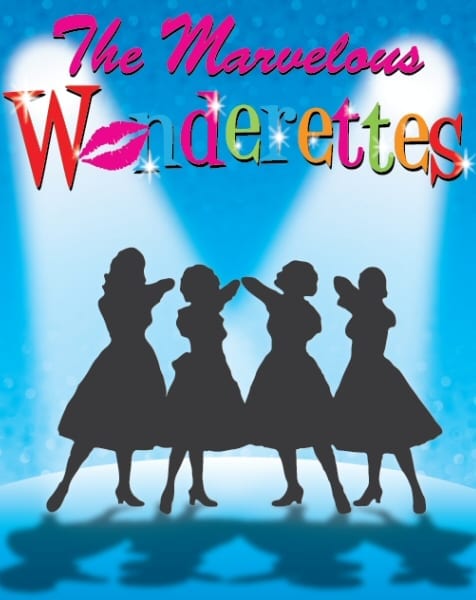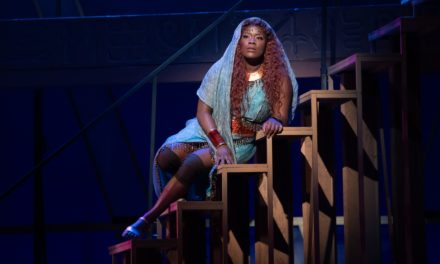PROVO — In 2005 I had many friends try and convince me to read Princess Academy by Shannon Hale. But because I had “reader’s regret” about another young adult fiction novel by a local author that came out around that same time, I chose to ignore my friends. So, I knew very little about Princess Academy when walking into the world premiere stage adaption this weekend. If BYU’s adaption of The Princess Academy is any indication of the quality of the novel, I was wrong to ignore this story.
Princess Academy follows Miri, a young lady, and her tight knit, hardworking community that reside in the mountainland of the kingdom of Danland. As an isolated community, they live and work in ways foreign to the rest of the kingdom, but they hold an importance and value to the land that is unknown to even the villagers themselves. The plot centers on the village being chosen to be the home of the future princess, and the task of training the girls of the village in order to deem them “appropriate” for the prince. While that premise may seem a bit of a simple fairy tale, the plot of this story brings out the importance of family, teamwork, education, believing in oneself, and developing our own personal strengths.
As an outsider to the storyline, a quick scan of the audience told me I was in the minority. Several young girls were there with their mothers, novel in hand, speaking excitedly about their anticipations of the show. I sat next to one young lady who said she had read the novel first at 17, and it was what had encouraged her to choose to major in economics at BYU. I was intrigued and interested to watch how this story would evolve on stage, and if the fans in the audience were to be pleased or disappointed. Lisa Hall Hagen was tasked with the adaption of the novel to the stage. Perhaps the best compliment I can pay Hagen is that I immediately downloaded the novel to my kindle while walking to my car when the show is over. The task of being true to the source material when adapting it to another medium can be tricky. Yet, Hagen had done a fine job of bringing to life what many had already envisioned in their head.
Director Megan Sanborn Jones had the difficult task of taking a story from the page and bringing it to life in a way that would please those familiar with the story as well as touch and intrigue novices like myself. One of the things that impressed me most about her direction was the cohesiveness of the cast. There were several moments throughout the play where the members of the village, the girls at the academy, and the cast as a whole needed to move the plot along with a level of harmony that can only be achieved through strong direction. Jones has been able to bring together the cast in such a way that it was not difficult to believe that this was a community and family that had learned to work together for years in order to survive. The costumes designed by Mary Jane Wadley and the scenic design by Rory Scanlon were noteworthy. The two gave Danland a Scandinavian feel that matched the tone of the story. As a person proud of her Norwegian heritage, I felt that the set and costumes brought the feeling of home, which is essential for the storyline.
The entire cast is to be praised for their excellent performances. However, there are a few that stood out for their portrayals. First would be Rachel Pullan as the wise character named Doter. Pullan had a command of the stage not that made her believable as the leader of the village and the one that other villagers looked to for answers. There were several moments within the play that Pullan was to make the final judgement or decision, and her mere presence seemed to validate the idea that all there were willing to listen to her. Next, I particularly enjoyed the performance of Megan Flinders as Katar. Flinders portrayed the “mean girl” that everyone loves to despise, but who has reasons for her behavior. What impressed me most about Flinders is the believable way that she made her character’s actions, especially when a character has an abrupt change in behavior. However, from the beginning I could tell there was emotion under the character’s attitude.
Finally, Aubrey Bench, as Miri, was perhaps the strongest performer of the night. Bench was asked to portray a character not unlike Jo March or Anne Shirley—a character that needs to be lovable as well as strong, intelligent as well as kind. Miri is ultimately the glue that holds the story and the cast together. I was quite take by the performance of Bench, and the authenticity that she brought to each moment, whether it was the joy of discovering how books can lead to knowledge, the need to understand her own worth, or the fear that no one would listen to someone like her.
The show built a tale of how important it is to find our own strengths and that it takes all talents working together to do something of worth. This is certainly true of a play. From the script to the stage hands, from the chorus member to the lighting design, every element must work in harmony in order to put together a strong performance. The cast of BYU’s Princess Academy is much like the people of Mount Eskel in Danland in that way, each doing their part to bring about a new and innovative story to the stage.









